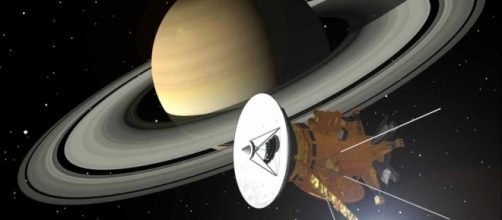Back in 1997, the spacecraft Cassini-Huygens was launched into space. Cassini-Huygens then took an interplanetary voyage before it finally reached Saturn in July 2004. That December, the lander Huygens detached from Saturn orbiter Cassini to land on Saturn's moon Titan.
In November 2016 the Cassini orbiter entered the final phase of its mission due to dwindling fuel in the craft to make further orbital corrections. Hopefully, it can give scientists one last amazing discovery before its mission comes to an end. As Cassini nears the end of its journey, the SS John Glen made its maiden voyage.
The start of Cassini's last ride
Cassini flew by Titan for the 127th and final time on April 22 to use its gravity to slingshot its self into an area of Saturn that has never been explored. Cassini is going to spend the last months of its life going into a series of exploratory dives inside the gap between Saturn and its innermost ring. It has made it through the first of these dives, completing it on April 26th.
The hope is that Cassini will be able to survive a further 21 orbits through this gap, before it is destroyed by sending it into Saturn's atmosphere on September 15, 2017. This decision was made by NASA scientists back in 2010 to stop the craft from potentially crashing into one of Saturn's moons.
The reason for this is to prevent the possible biological contamination of life that could be on Titan or Enceladus.
What could Cassini discover?
Since Cassini is diving into the area between Saturn's cloud tops and its inner ring, scientists are eager to see what new information this can bring them. During its many dives into this region, the craft will measure the amount of ice and other materials that make-up the rings. It will also figure out what the chemical composition of the rings are to help give scientists a better idea of how they formed.
Lastly, it will study Saturn's atmosphere and take measurements to try to determine how large the planet's rocky core is.
The S.S. John Glenn
The S.S. John Glenn, named to honor the great astronaut who passed away last December, arrived at the International Space Station (ISS) on April 21.
It is the seventh Cygnus cargo ship from Orbital ATK to deliver supplies and science experiments to the ISS crew.
The S.S. John Glenn will remain attached to the Unity module of the ISS for 85 days. It will then be filled with used up equipment and trash that will be destroyed during its destructive re-entry into Earth's atmosphere.


